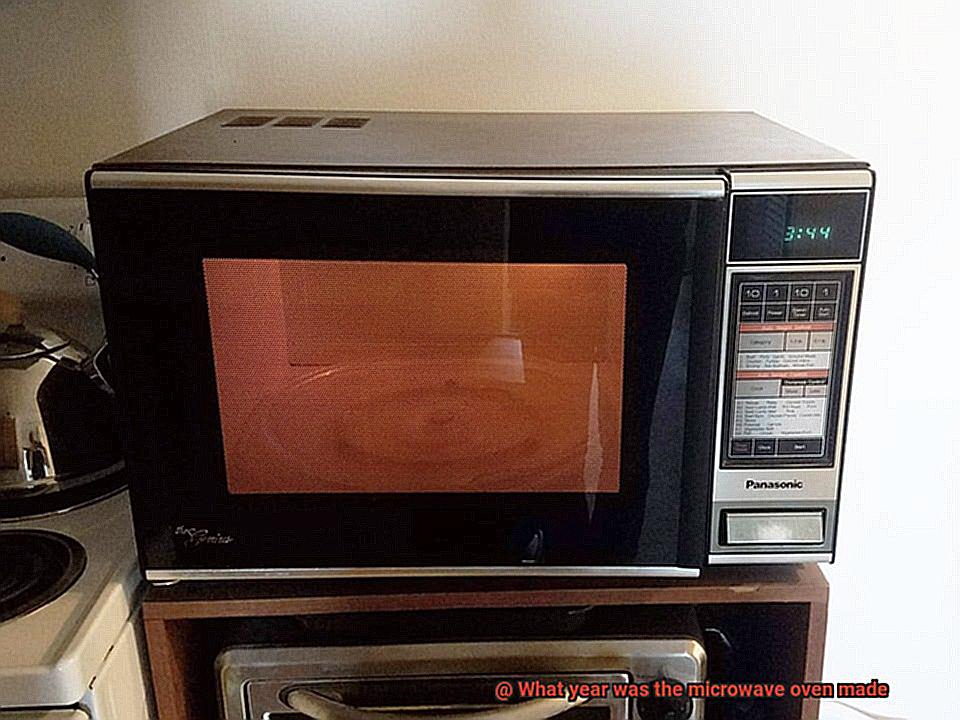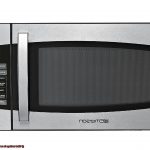Step into any modern kitchen, and you’ll likely find a microwave oven sitting proudly on the countertop. This ubiquitous appliance has become an essential tool in our daily lives, making everything from reheating leftovers to cooking a frozen meal a breeze. But have you ever stopped to wonder when this magical device first entered our homes?
Surprisingly, the microwave oven is a relatively new invention, with its origins dating back only to the mid-20th century. It all began when a curious scientist stumbled upon a revolutionary way of cooking food that would change the world forever.
In this blog post, we’ll take you on a journey through the fascinating history of the microwave oven. We’ll explore how it was invented, how it was initially received by the public, and how it eventually became a household staple. Along the way, we’ll delve into the science behind how microwaves work and examine some of the ways in which this technology has evolved over time.
So if you’ve ever wondered what year the microwave oven was made or simply want to learn more about this indispensable kitchen tool, keep reading.
Contents
The History of the Microwave Oven
The microwave oven, a beloved kitchen appliance in many households today, has a surprisingly long and fascinating history. It all began in the early 1900s when scientists first started experimenting with high-frequency radio waves. However, it wasn’t until the 1940s that one chance discovery would revolutionize the way we cook our meals forever.
Dr. Percy Spencer, an engineer at the Raytheon Corporation, was working on a radar magnetron when he noticed something peculiar. A candy bar in his pocket had melted due to the high-frequency radio waves emitted by the magnetron. This led him to conduct further experiments and ultimately led to the invention of the first microwave oven in 1945, called the “Radarange.”
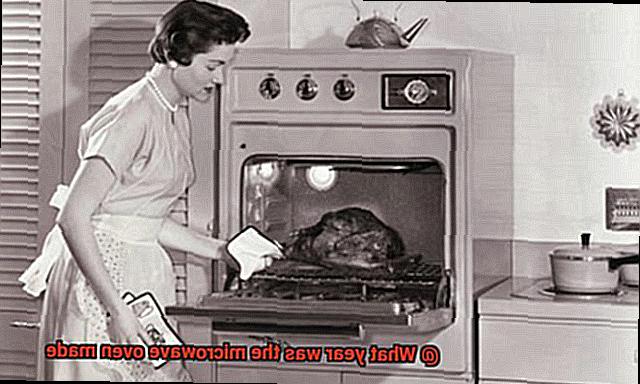
The Radarange was a commercial model that weighed around 750 pounds and cost about $5,000, making it too expensive for most households. It was primarily used in restaurants, hospitals, and other commercial kitchens. However, it wasn’t until the 1960s that the microwave oven became more affordable and popular for home use.
In 1967, Amana Corporation introduced the first countertop microwave oven for home use: the Amana Radarange. While still expensive at $495, it was a smaller and more affordable version of the commercial models. As more companies began manufacturing microwave ovens, prices began to drop, making them more accessible to households.
By the 1970s, the microwave oven had become a common household appliance in many parts of the world. Today, they come in various sizes and price ranges and are used for everything from heating up leftovers to cooking entire meals. They have even evolved with new features and technologies being added all the time.
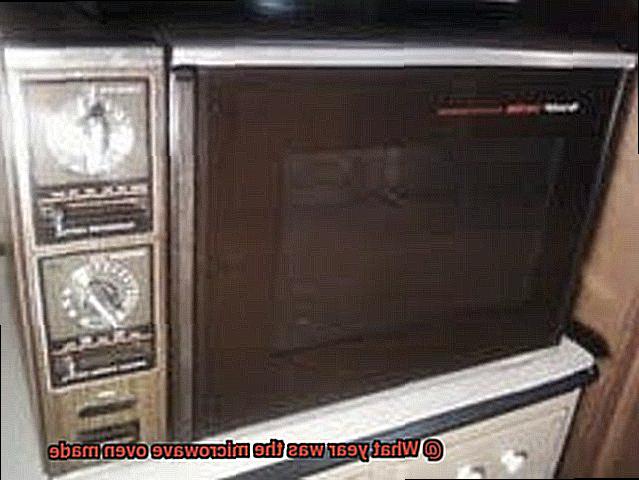
Despite their popularity, some people still have concerns about microwave ovens’ safety. However, studies have shown that when used properly, they are safe and do not pose any health risks.
The history of the microwave oven is a fascinating one, from chance discovery to household staple. Here are some interesting sub-topics to note:
- The development of microwave-safe cookware and containers
- The impact of microwave ovens on the food industry and convenience foods
- The evolution of microwave ovens with new features such as convection and grill options
- The cultural differences in microwave oven usage around the world
Percy Spencer and the Invention of the Radarange
Get ready to be transported back to the early 1940s, where Percy Spencer was busy working on a radar system called the magnetron for Raytheon Corporation during World War II. Little did he know, this work would lead to one of the most revolutionary kitchen appliances of all time: the microwave oven.
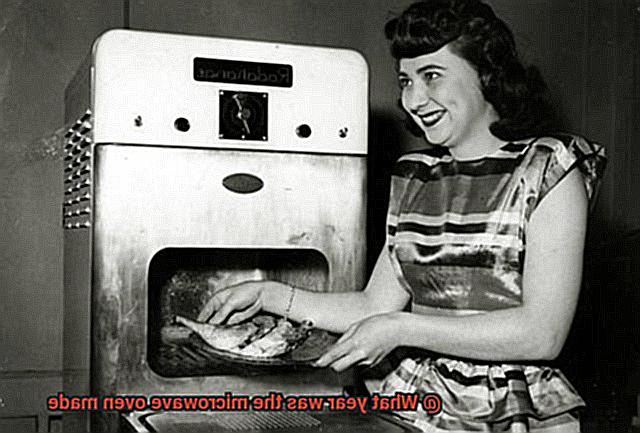
While conducting experiments with the magnetron, Spencer’s candy bar in his pocket melted. This strange occurrence piqued his curiosity, leading him to conduct further experiments with food and microwaves. And just like that, he discovered that microwaves could quickly heat and cook food.
Spencer’s brilliant mind then went to work, and he created a metal box with an opening for food and a magnetron to generate the microwaves – thus inventing the first microwave oven. In 1945, it was demonstrated for the first time, but it took several years of development before it became commercially available.
The first microwave oven, affectionately dubbed the Radarange, was sold by Raytheon Corporation in 194Although it was large, expensive and primarily used in commercial kitchens, this invention marked a significant turning point in cooking technology.
Fast forward to today, and nearly every home has a microwave oven for quick and convenient cooking. Thanks to Percy Spencer’s accidental discovery while working on a radar system during World War II, we can now warm up leftovers or cook an entire meal in minutes.
The Popularity of the Radarange
Ladies and gentlemen, today we’re going back in time to explore the revolutionary Radarange – the first commercially available microwave oven that changed the way we cook our food forever.
So why did the Radarange become such a phenomenon? Let’s dive into some fascinating sub-topics.
Firstly, the Radarange’s commercial success. When Raytheon Corporation launched it in 1947, it was exclusively for commercial food establishments. Its high price tag made it an unlikely purchase for most households at that time. However, with advancements in technology and lower prices, microwave ovens became more accessible to the average consumer.
Secondly, affordability. Countertop models were introduced in the 1970s, and they were priced at under $500, making them much more affordable for households to purchase. By the 1980s, almost every household had a microwave oven, and they had become a staple in modern kitchens.
Now let’s talk about convenience. The convenience and time-saving benefits of microwave ovens contributed significantly to their popularity. They could quickly heat up leftovers or frozen dinners without having to use a conventional oven or stovetop. Not only that, but they allowed for faster cooking times and reduced energy consumption.
Lastly, let’s appreciate the role Radarange played in revolutionizing microwave technology. Although initially too expensive for most households, its commercial success paved the way for smaller and more affordable models that are now commonplace in modern homes worldwide.
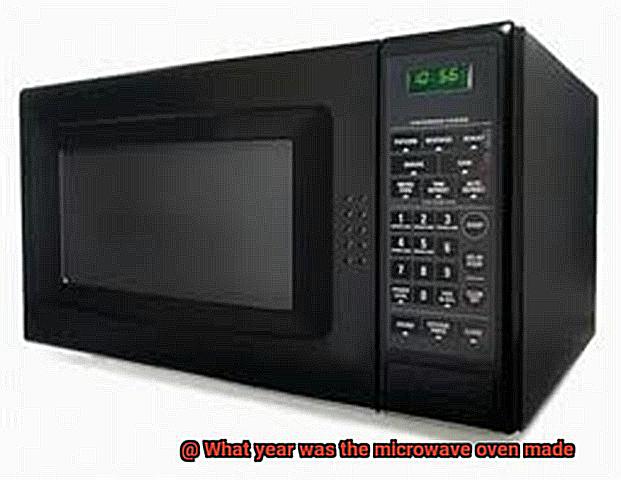
The Move to Home Use
Now, it’s hard to imagine a modern kitchen without one. So, what led to the move towards home use of this magical appliance? Let’s take a closer look.
The mid-1960s saw the introduction of the countertop microwave oven, which quickly became a popular kitchen appliance. This smaller, more affordable version made it easier for households to own one. The first of its kind was the Amana Radarange, and it paved the way for future models that took up less space and were more affordable.
The design of the countertop model was also more user-friendly, with easy-to-use controls and a smaller size that could fit on a kitchen counter. This made it an attractive option for busy families looking to cook food quickly and easily without dirtying multiple pots and pans.
But affordability wasn’t the only factor driving the move towards home use of the microwave oven. Safety concerns were also addressed with advancements in technology, which led to the development of safer and more efficient models. Early models had issues with uneven heating and even exploding, but these concerns were alleviated over time.
Today, the convenience of being able to cook food quickly and easily without dirtying multiple pots and pans is just one reason why the microwave oven has become an essential part of our everyday lives. From reheating leftovers to cooking frozen meals, this appliance has revolutionized how we prepare food in our homes.
The Amana Corporation and Countertop Microwave Ovens
Look no further than the Amana Corporation, a company that forever changed the culinary world with its innovative microwave ovens.
Back in 1967, Amana introduced the first countertop microwave oven, dubbed the Radarange. Originally intended for commercial use in restaurants and other food service establishments, this groundbreaking invention quickly caught the attention of consumers who wanted one in their homes. Despite its bulky size and high price tag, the Amana Radarange was a game-changer for the culinary industry.
The introduction of the Radarange revolutionized cooking by making it faster and more convenient for people with busy schedules. This innovation was particularly beneficial for families looking to cook food quickly and easily without dirtying multiple pots and pans. The Amana Corporation’s commitment to innovation and improvement has helped millions of people around the world save time in the kitchen.
Amana continued to innovate and improve its microwave ovens over time. The company introduced features like automatic defrosting and programmable cooking functions, making cooking even more accessible and convenient for busy families. Today, Amana remains a leading manufacturer of high-quality microwave ovens.
The Evolution of Microwave Ovens
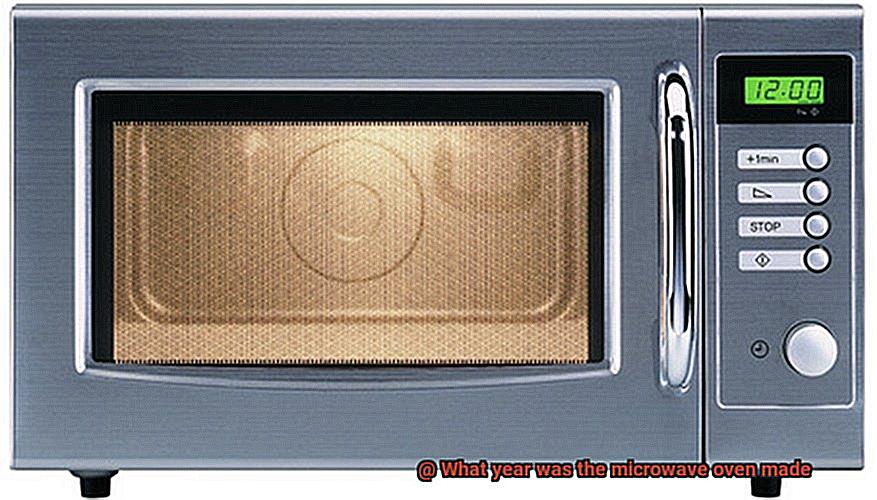
The evolution of microwave ovens is a fascinating journey that has revolutionized modern-day cooking. From its humble beginnings in the 1940s to the advanced technology we see today, microwave ovens have come a long way.
The Birth of Microwave Ovens
In 1945, Percy Spencer, an engineer at the Raytheon Corporation, accidentally discovered microwaves could cook food. This led to the invention of the first commercially available microwave oven, the Radarange, in 194Standing over five feet tall and weighing over 750 pounds, it was impractical for home use but popular in commercial settings.
Smaller and More Affordable Microwave Ovens
In the 1960s, smaller and more affordable microwave ovens were introduced to the market, designed for home use and quickly became popular due to their convenience. By the 1970s, microwave ovens were a common appliance in most households.
Advancements in Features
In the 1980s and 1990s, microwave ovens continued to evolve with new features like convection cooking and programmable settings. These advancements made it easier for people to cook a variety of dishes with ease.
The Modern Microwave Oven
Today, microwave ovens are smaller, more efficient, and come with a wide range of features that make them an essential appliance in most kitchens. They can defrost food, cook entire meals, bake cakes, and even grill your favorite dishes.
The Future of Microwave Ovens
As technology continues to advance, so do microwave ovens. With features like voice activation and smart technology becoming more common in appliances, we can only imagine what could be in store for the future of microwave ovens.
Modern Day Features and Technologies
From their accidental discovery in the 1940s to their current status as a staple in modern kitchens, microwave ovens have undergone an incredible transformation. With each passing year, new features and technologies have been added to make these appliances even more efficient and user-friendly. As an expert on modern-day microwave ovens, let me take you through the exciting developments that have revolutionized the world of food preparation.
One of the most significant advancements in microwave ovens is their ability to cook food evenly. This is made possible by multi-dimensional cooking technology and rotating turntables. By exposing all sides of the food to microwaves, rotating turntables ensure that the meal is cooked evenly. Multi-dimensional cooking technology, which combines microwave, convection, and grill heating methods, ensures that food is cooked uniformly from all directions.
Another remarkable feature of modern-day microwave ovens is their ability to defrost food quickly and efficiently without cooking it. Advanced defrosting technology ensures that frozen food is evenly thawed without being partially cooked. This feature saves time and ensures that your food retains its texture and flavor.
Pre-set cooking options are also essential features of modern-day microwave ovens. With just a touch of a button, you can cook popcorn, baked potatoes, or pizza without worrying about timing or temperature settings. Some models even have built-in sensors that detect when your food is cooked and automatically turn off the oven.
Finally, smart features such as voice control and Wi-Fi connectivity have made modern-day microwave ovens even more convenient. Imagine being able to start cooking your dinner while still at work so that it’s ready when you get home. With these advanced features, you can control your oven using your smartphone or virtual assistant like Alexa or Google Assistant.
Benefits of Using a Microwave Oven
From quick meal prep to energy-saving features, there are countless benefits to using a microwave oven. These versatile appliances were first introduced in the 1940s and have since become a staple in modern-day kitchens. As an expert on the topic, let me give you an in-depth look at some of the top benefits of using a microwave oven.
One of the most significant advantages of using a microwave oven is speed. It’s no secret that microwaves can cook food much faster than conventional ovens or stovetops. Whether you’re reheating leftovers or cooking a meal from scratch, a microwave oven can get the job done in a fraction of the time.
Not only is a microwave oven faster, but it’s also more energy-efficient than other cooking methods. Microwaves only heat the food, not the surrounding air or container, which reduces energy waste. This means that you’ll save money on your energy bills while reducing your carbon footprint.
But it’s not just about speed and efficiency – microwaves can also help preserve nutrients in food. They cook quickly and at lower temperatures than other methods, which means that your meals will retain more vitamins and minerals. This makes them healthier for you and your family.
Reheating leftovers or frozen foods has never been easier with a microwave oven. It can quickly bring them up to a safe temperature without any waiting or risk of foodborne illness. And when you forget to take something out of the freezer in advance, defrosting food in a microwave oven is much faster than using a refrigerator or running water over it.
If you’re looking for even more versatility in your kitchen appliances, newer models of microwave ovens have additional features such as grilling, baking, and steaming. These features expand the cooking capabilities of a microwave oven, making it even more useful in your kitchen.
JaFAiDcV9Jg” >
Conclusion
In conclusion, the microwave oven has become an indispensable tool in modern kitchens worldwide. It’s hard to imagine a quick and easy meal without one. The origins of this revolutionary appliance date back to the mid-20th century when a curious scientist stumbled upon a game-changing way of cooking food.
Dr. Percy Spencer’s accidental discovery while working on a radar system during World War II led to the invention of the first microwave oven in 1945, known as the “Radarange.” Although initially too expensive for most households, smaller and more affordable models were introduced for home use in the 1960s.
Today, microwave ovens come with various features that make them even more efficient and user-friendly. From multi-dimensional cooking technology and rotating turntables to pre-set cooking options and smart features like voice control and Wi-Fi connectivity, these appliances have come a long way since their inception.
Using a microwave oven offers numerous benefits, including speed, energy efficiency, nutrient preservation, and convenience. Whether you’re reheating leftovers or cooking an entire meal from scratch, this appliance has revolutionized how we prepare food in our homes.
Overall, the history of the microwave oven is fascinating – from chance discovery to household staple. As technology continues to advance at lightning speed, we can only imagine what could be in store for the future of microwave ovens.

